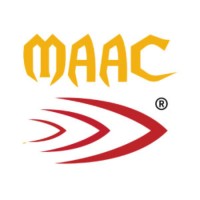types of scholarships available to high school students
Description
Navigating the Scholarship Landscape: Resources and Tips for High School Students
Finding and securing scholarships can be a crucial component of planning for college, especially for high school students navigating the complexities of higher education funding for the first time. With a myriad of options available, understanding the scholarship landscape can seem daunting.
However, with some guidance and the right resources, students can enhance their prospects of earning financial awards that will support their academic ambitions. In this article, we’ll explore various types of scholarships, application strategies, and search tools that can streamline the scholarship application process.
Understanding the Different Types of Scholarships Available to High School Students
When applying for scholarships, pay close attention to the details. Carefully read the instructions and gather all the necessary materials, including transcripts, letters of recommendation, and your resume.
Tailor each application to fit the scholarship’s mission. Highlight experiences and goals that align with the provider's values. In your essay, be genuine and focused—start strong, stay on topic, and connect your story to the scholarship’s purpose.
Finally, don’t miss the deadline. Submit early to avoid last-minute issues, since even the best application won’t be considered if it’s late. Being organized and proactive can significantly increase the chances of winning awards, such as those offered through valuable resources that provide scholarships for high school students.
Crafting a Standout Scholarship Application: What You Need To Know
When applying for scholarships, details matter. Start by carefully reading the guidelines and gathering all required documents, like transcripts, recommendation letters, and your resume. Make sure everything meets the application’s requirements.
Personalize each application to match the scholarship provider’s mission. Highlight your experiences and goals that align with their values, as this helps you stand out from the crowd. In your essay, be genuine and clear. Open with a strong introduction, stay focused, and connect your story to the scholarship’s purpose.
Lastly, never miss the deadline and submit your application a few days early to avoid last-minute problems. Even a great application won’t count if it’s late.
Leveraging Online Scholarship Databases and Search Tools Effectively
Online databases and search tools make finding scholarships much easier by collecting thousands of opportunities in one place. To avoid feeling overwhelmed, use filters to narrow your search by factors such as major, background, or award amount.
Creating a profile on reputable sites helps you receive personalized matches, and setting up email alerts keeps you informed about new scholarships and upcoming deadlines. Ensure your profile is always up to date.
With convenience often comes the risk of falling prey to scams. It’s crucial to use credible search tools and to be wary of any scholarship that requires a fee to apply or seems too good to be true. Students should also protect their personal information by verifying the legitimacy of the organization behind each scholarship offer.
Forums and community boards can provide additional insight into the credibility of scholarship opportunities.
For high school students who are particularly active or have limited time, mobile apps dedicated to scholarship searches can be an excellent resource. These apps enable on-the-go research and application submissions, making good use of time that might otherwise be underutilized, such as during a commute.
Strategies for High School Counselors to Support Students in the Scholarship Process
High school counselors play a key role in guiding students through the scholarship process. They can start by fostering a culture of scholarship awareness within the school.
This could involve organizing informational workshops, creating bulletin boards with current opportunities, or integrating scholarship discussions into academic advising sessions. The more counselors can normalize and encourage scholarship pursuits, the better equipped students will be to take initiative.
Another strategy involves helping students identify strengths and matching them with relevant scholarships. Counselors can offer valuable insights into the types of scholarships that align with students’ interests and skills, enabling a more targeted and efficient search.
Regularly updating a database of scholarship opportunities, specifically tailored to the student body they serve, can be incredibly beneficial.
Finally, staying informed about scholarship trends and changes is vital for high school counselors. They need to be aware of new scholarship opportunities, changes in application processes, or shifts in what selection committees are looking for. This ongoing professional development ensures counselors remain a relevant and knowledgeable resource for their students.
The scholarship process for high school students can be significantly streamlined with the right approach and resources at their disposal. By starting early, being thorough, leveraging technology, and actively seeking support from counselors, students can maximize their chances of winning scholarships to support their educational journey.
Similar Blog :
how to improve your guitar skills today






















Great breakdown of the types of scholarships for high school students! Loved how you highlighted merit and need-based options. A solid Presentation Design on this topic could really help students grasp these opportunities better and plan ahead. Thanks! https://Storyfiner.com/